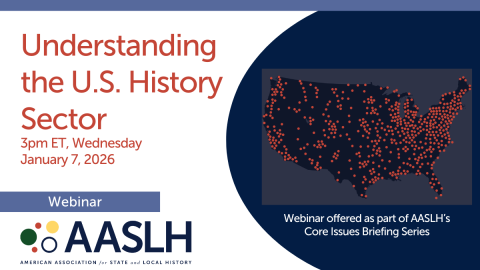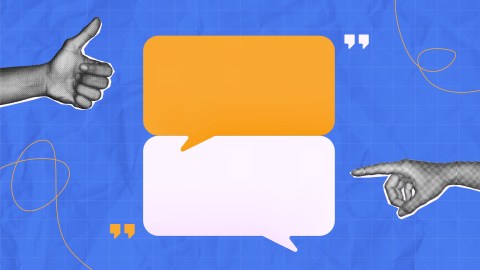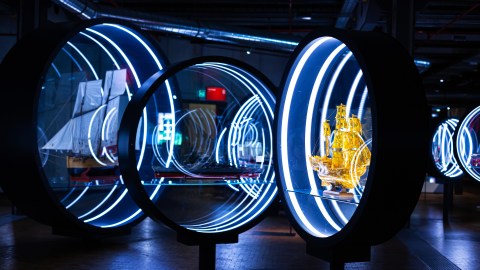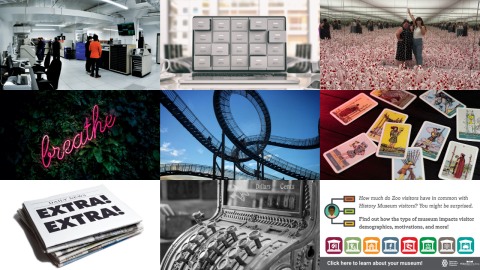
Many museums are struggling with when, and whether, to open, reclose, and reopen. These enormously difficult decisions may determine whether the organization survives the current crisis. After experiencing the first two stages of this cycle in early July, the San Diego Natural History Museum (The Nat) have decided to remain closed through the remainder of the year. In today’s guest post, President and CEO Judy Gradwohl explains how she and her colleagues decided the best way for The Nat to survive 2020 is to focus on actions online, and in nature, rather than reopening their doors.
–Elizabeth Merritt, VP Strategic Foresight and Founding Director, Center for the Future of Museums
It may seem counterintuitive to voluntarily stay closed, especially after the effort expended on our short-lived reopening, but that is exactly what we decided to do at the San Diego Natural History Museum. The decision to remain closed for the duration of 2020 still makes good programmatic and economic sense, despite the fact state and local authorities have given museums the green light to reopen.
There are obvious disadvantages to a prolonged closure, especially one we bring on ourselves. We are forgoing interactions with visitors, along with the educational value and admissions money we usually generate. Some members join to receive free admission, so with no new foot traffic we are expecting a decline in new memberships. With other neighboring museums open, our self-imposed closure could generate negative publicity. And an extended closure prolongs the furlough of our frontline staff.
As significant as these losses are, we expect them to be outweighed by the benefits of staying closed.
Certainty and greater safety in a chaotic world: I’m sure every museum leader can relate to the anxiety, inefficiencies, and unknowns caused by a constantly moving target. Months of preparation went into our reopening. We removed or altered touchable exhibit elements, provided hand sanitizing stations, stocked up on personal protective equipment, installed temperature reading stations for staff, implemented one-way traffic patterns, and developed an entirely new marketing campaign to welcome people back safely.
We were ready, we opened, we welcomed guests with open arms (figuratively, and from behind plexiglass barriers). And five days later, a rise in COVID-19 case numbers mandated the closure of California museums for the second time. It was a vast disappointment to close almost immediately after opening. Every subsequent week that passed required recalculating our budget and cash flow, and increased concern about losing summer admissions—our biggest season of the year.
The decision to stay closed through the end of the year gives us a fixed point to work toward and a more certain planning horizon. We can channel energy and work toward the projects we want to accomplish rather than worriedly monitoring a burgeoning problem.
Ability to reprogram our time and energy: Instead of waiting and lamenting a fall without school visits, our closure helps focus our energy on what we can accomplish instead of what we can’t. With 100 full-time employees remaining on staff, we have a significant workforce to devote to our scientific research, conservation work, education, and planning for the future. Our biological and paleontological fieldwork has increased, resulting in significant finds, a successful binational translocation of red-legged frogs, reintroducing a locally extinct species to Southern California, and increased protection of numerous species.
We have already seen a blossoming of inventive and well-received online programming. Our education staff have shifted their focus to people who can’t or won’t visit by creating digital resources to help schools, aftercare programs, and other caregivers. With a combination of pre-recorded and live programming, they are expanding upon our traditional standards-based school visit program to help students experience nature and meet our scientists.
Our monthly evening lectures and adult programs moved online and became more frequent. We are now hosting webinars with more participants than would fit in our 300-seat theater, and people log in from around California, the nation and the world. We held our first evening talks entirely in Spanish, bolstering our binational mission, and featuring our Mexican colleagues. We’ve seen people attend our virtual programs who might never have stepped foot inside the building. Our Canyoneers, volunteers who usually lead in-person, guided hikes, have curated “best of” hikes for the fall season and are providing online guidance for hikes people can do on their own.
Refocusing on mission: Our organization started nearly 150 years ago as the San Diego Society of Natural History, and we still operate under that legal name. We have always been larger than our physical facilities, and now is no exception. As we close our beloved building and fling open our digital doors, we have the ability to highlight the full range of our mission. Social media that previously was devoted to programming, and attracting visitors is helping everyone understand and enjoy nature in our region, and showcase scientific research and conservation efforts. In place of behind-the-scenes tours and other events for supporters, we are providing frequent updates documenting our accomplishments and how we are delivering on our mission during the shutdown.
Some members join for the discount admission, but many support us because they believe in our cause. We have seen some attrition, but not as much as we had anticipated—a testament to how much people believe in our work. Communication and online member events are focusing on strengthening ties with members through our scientific work, in addition to special programming.
Opportunity for minor construction projects: We are hoping to complete small construction projects that were already approved and funded. It is easier and potentially less expensive to work in public-facing areas of the building while it is closed to the public. Projects include a new ramp for accessible entry to back-of-house portions of the Museum, and converting offices to an exhibition gallery.
How can we afford to keep this many staff and stay closed? It poses major challenges, but we are fortunate to have diversified sources of income. Our scientific staff also run consulting businesses, which return significant funding to the Museum to maintain our collections and provide general operating support. We have an active program of grants to support projects, related salaries, and experimental projects.
Philanthropy always plays a major role in our annual budgets, and this year in particular, successful fundraising will be critical. We are privileged to have a supportive community that helped us meet a $500k challenge grant, closing the $1M gap generated by our closure in July and August of this year.
We entered the closure last spring from a position of financial strength, carefully managed our cash, and were able to secure a forgivable Paycheck Protection Program loan from the U.S Small Business Association. We instituted austerity measures by limiting spending, cutting back on work by our as-needed part time staff, and after we re-closed in July, we furloughed most frontline staff. We’re still closely monitoring our cash, analyzing scenarios that move our reopening date back in 2021, and understanding whether we can reopen on select days around the holiday season.
It was a bold and potentially risky move to keep the Museum closed and focus on actions online and in nature, a decision that was made possible through support from a visionary board and staff. On the other hand, it gives us the impetus to refocus our efforts where they will make the most impact. This is challenging work that requires retooling and rethinking. We feel that, in the future, our model will need to blend onsite, online, and nature-based activities, and this extended closure gives us the opportunity to develop the skills and tools we need to get there. Ultimately, the hope is that we will emerge from the pandemic stronger. We are in a chrysalis, not crawling into a burrow to hibernate, and when we emerge we will have grown, strengthened and transformed.
Judy Gradwohl
President and CEO
San Diego Natural History Museum









What about the well being of your staff? Financial, physical, and morale? I regret that at my own institution and in this article I see working practices and perspectives that do not take care for staff into account.
An impressive and thought-provoking statement, one that prompts me to think along a number of lines. How many science museums in the US (often referred to as “research museums”) have never been open to the general public, or at least never open on a regularly-scheduled basis. Does this make them “non-museums”? Over the years, how many natural history museums have abandoned or canceled their field work and research programs in favor of greater focus on earned revenue and visitor services? I imagine that in most or all of those cases, arguments that field work and research enriched programs for the public fell on deaf ears. As Pres. Gradwohl suggests, this is an opportunity for natural science museums to rediscover their core resources and their missions, and how these can be used most effectively to inspire wonder in the nature world.
As a volunteer at the above museum, San Diego Natural History Museum, staff communicate with themselves frequently and with volunteers who are actively helping the museum with at-home projects. I for one, as a volunteer, am photographing butterfly specimens at home that will be used in a brochure project as well as georeferencing plant specimens using excel spreadsheets. I am in the high risk group of people so I won’t be going back to the museum building for along time until I know it is entirely safe 100% of the time or there is an effective vaccine. But the above volunteer activities help me help the museum and keep me active as well.